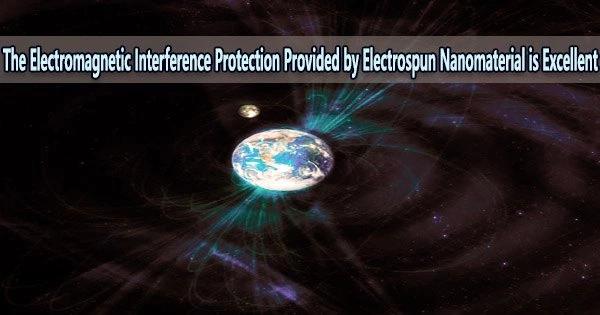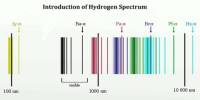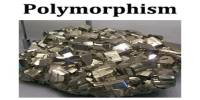Engineers have created a unique fabric that gives high performance protection against electromagnetic interference, a phenomena that can cause electronic device malfunction and, at high exposure levels, be harmful to human health. “Electrospinning” is a new method of producing nanomaterials.
The technique is described in a paper published in Nano Research on December 31, 2022.
Both internally and externally, the electric and magnetic fields produced by electrical equipment can negatively affect digital systems. When such technology is in close proximity to one another, it might cause dangerous problems, especially when it comes to transportation or medical devices like pacemakers and insulin pumps.
In addition to harming electronic devices, this interference poses a risk to human biology, which uses bioelectromagnetic processes in part, at very high levels over a short period of time.
For all of these reasons, protecting people, objects, and individual objects and objects from electromagnetic interference is a top priority. Such shielding also needs to be lightweight and flexible to prevent making gadgets, especially wearable ones, unnecessarily large and heavy.
Such shielding has been centered on the employment of silver plating, metal wire fabrics, and metal wire combined with chemical fibers since the 1960s. However, there were significant obstacles to the broad adoption of such electromagnetic protective materials, including their high cost and lack of flexibility.
Novel carbon-based materials, such as graphene, carbon aerogels, and carbon nanotubes, have recently and largely as a result of the electromagnetic shielding requirements of military stealth technologies, been applied with great success in various electromagnetic absorption and shielding applications.
It is possible to produce high attenuation of electromagnetic waves because of the unique microscopic and nanoscale structures of these materials, which primarily rely on scattering and reflection of radiation between layers as well as electron transmission. Their huge surface area, light weight, flexibility, and environmental sustainability are further advantages.
Special mesh structure composites, constructed by combining so-called one-dimensional materials (exceptionally thin ribbons or wires between 1 and 100 nanometers in length and effectively no width) with two-dimensional materials (similarly thin materials but existing in planar form, like an extremely thin piece of paper), have particularly excellent electromagnetic wave absorption and shielding properties.
“But even here, integrating multiple functions such as electromagnetic wave protection, durability, and comfort while maintaining the inherent flexibility of fabrics has remained a formidable challenge,” said Shuo Zhang, lead author of the paper and researcher with the State Key Laboratory of Biofibers and Eco-textiles, College of Materials Science and Engineering at Qingdao University.
However, in recent years, a series of two-dimensional layered structures made from carbides (any compound of carbon and a metal) and nitrides (any inorganic compound of nitrogen) have begun to attract attention amongst electromagnetic shielding researchers.
These 2D materials are called MXenes, as they are produced from “MAX” substances, where the M stands for an early transition metal such as titanium, vanadium and chromium; the A stands for any of the Group A elements in the periodic table such as aluminum, silicon and tin; and the X stands for carbon or nitrogen. The “ene” suffix is there to suggest a nano-structural similarity to graphene.
These MXenes are typically the result of an etching process that involves submerging a MAX material in hydrofluoric acid. In addition to exceptional electron transfer efficiency, high surface area, and mechanical qualities, their 2D layered structure also provides a variety of possibilities for internal reflection, all of which result in good electromagnetic wave absorption.
The best performing MXene so far has achieved a “reflection loss” performance of -41.8 decibels at 1.1 milimeters.
The researchers looked into electrospinning as a potential alternative to etching in order to surpass this. This is a technique of manufacturing extremely narrow, nanoscale fibers.
A syringe with a needle tip is used to hold a solution containing the desired material while a high-voltage power source causes an electric charge to build up on the liquid’s surface. The surface tension of the solution is eventually overcome by the electrostatic repulsion between charges. This causes a very small jet of the liquid to be produced, which dries as it shoots out of the syringe and stretches even farther due to electrostatic repulsion.
Electrospinning technology also offers one of the simplest and cheapest ways to prepare nanofibers, as well as being straightforward to operate.
By altering the process parameters, the microstructure, diameter, orientation, and stacking density of the fibers produced by electrospinning can also be modified. After electrospinning and a high-temperature thermal treatment, magnetic metal components added to the electrospinning precursor solution cause considerable magnetic loss that significantly improves the electromagnetic wave attenuation performance of the resulting nano-fibrous composite membranes.
The researchers electrospun a novel composite of two-dimensional MXene nanosheets combined with magnetic iron and nickel nanoparticles, as well as one-dimensional carbon nanofibers (CNFs).
An agglomeration of 1D structures and a self-stacking of 2D structures problems that plagued earlier MXene electromagnetic absorber material manufactured in the past are effectively avoided by the multi-dimensional composite electromagnetic protective fabric obtained by electrospinning while reducing costs and removing the processing difficulty.
While giving great flexibility and a lightweight waterproofing that delivers a higher endurance to the protective fabric in tough situations, their material did surpass the previous best performer, attaining an electromagnetic absorption performance of -54.1 dB (decibels) at 2.7 mm.
















